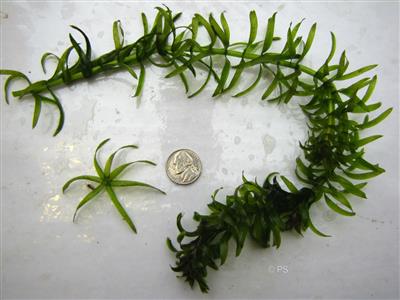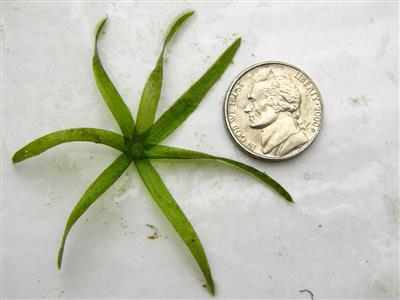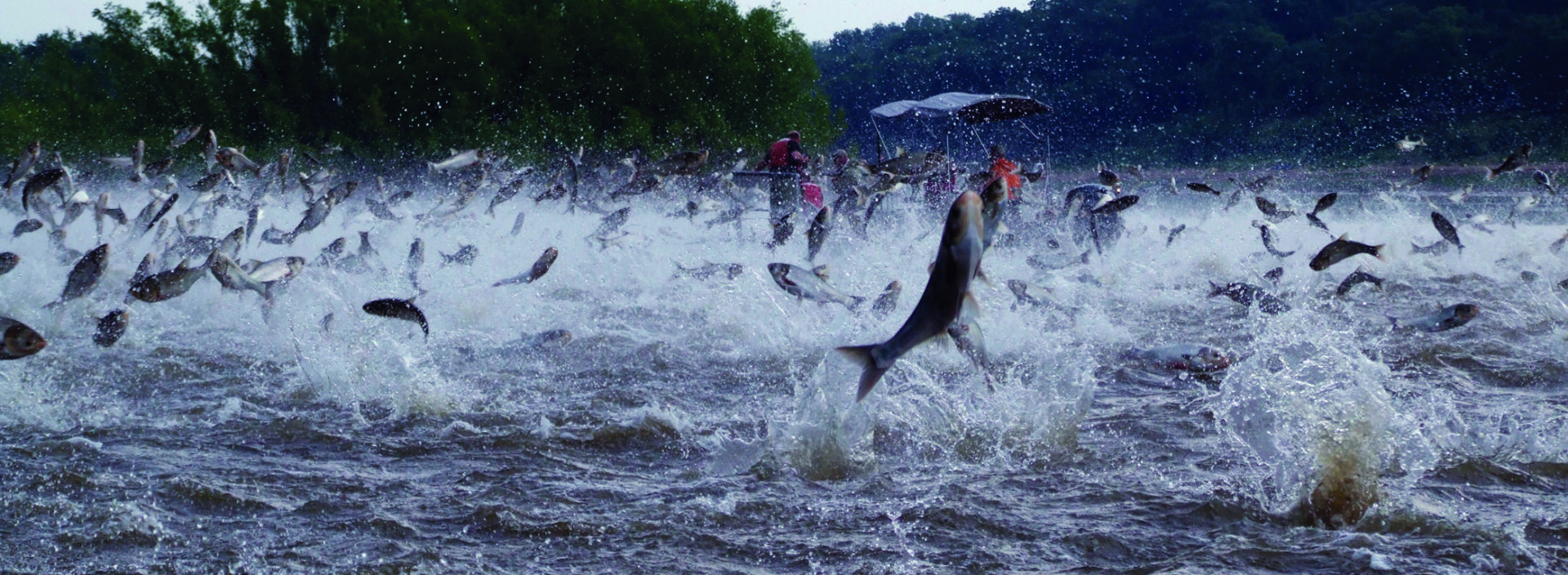Where did Brazilian elodea come from?
It is native to South America and was probably introduced as a result of aquarium releases or accidental shipment with aquatic plants.
Why is it a problem?
Brazilian elodea makes dense mats that crowd out native aquatic plants, create breeding grounds for mosquitoes, and interfere with water-based recreation, such as swimming, fishing and boating.
[su_row][su_column size=”1/2″ center=”no” class=””]
[su_column size=”1/2″ center=”no” class=””]
[/su_row]
What does Brazilian elodea look like?
- It is rooted on the bottom (up to 20 feet deep) or may float.
- The entire plant is submerged, except for the flowers.
- The leaves are bright green with 4-8 whorls that are close together along them stem.
- White flowers appear in spring or early summer.
- It can be easily confused with American elodea (Elodea canadensis) or Hydrilla (Hydrilla verticillata).
How does it spread?
Fragments of the plant easily tangle with fishing gear, boats and other equipment. These fragments can grow as new plants. In its native habitat, it produces seed, but all Brazilian elodea plants are the U.S. are male and don’t produce seed.
What habitat does it prefer?
Brazilian elodea grows in slow-moving or still water. It struggles in the hot summers of the southern U.S. and prefers the northern regions.
How can you tell invasive Brazilian elodea from similar plants?
American elodea is native to the Great Lakes region, and it has smaller leaves in whorls of 2-3. Note the whorl of 7 leaves in the first and second photos of Brazilian elodea. Invasive hydrilla has obvious coarse teeth along the edges of the leaves and may produce small tubers.


